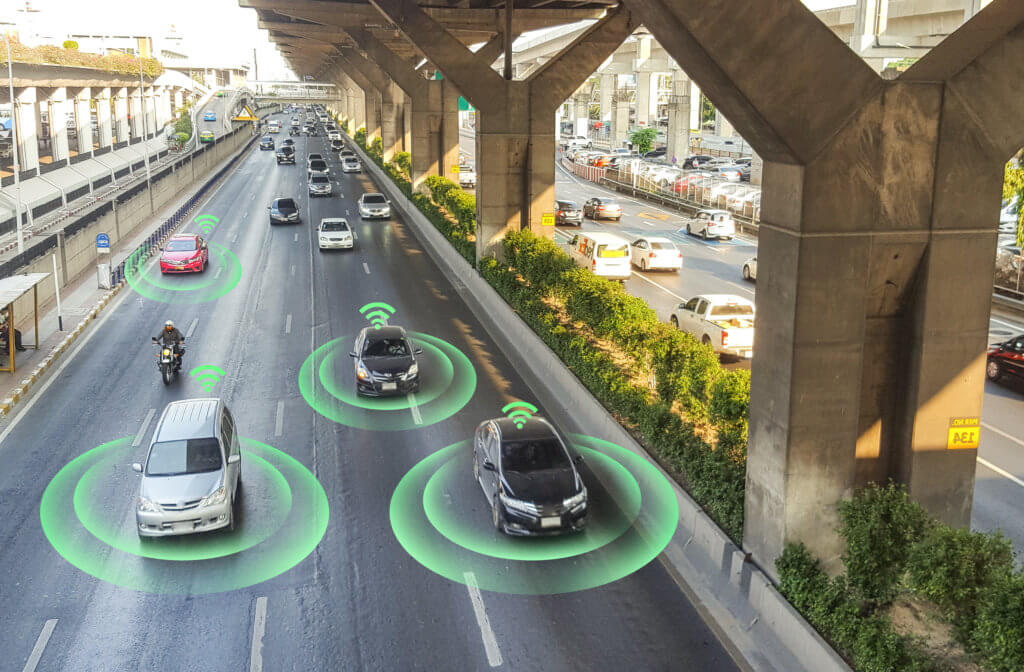RALEIGH, N.C. — Self-driving cars are supposed to be all about convenience, but there’s nothing relaxing about being stuck in traffic. Researchers from North Carolina State University report that “connected” vehicles, or cars that share data with each other wirelessly, significantly improve travel time through intersections. However, autonomous vehicles with no connection to their fellow cars can actually end up slowing down your daily commute.
“There are two significant reasons that people are interested in automated vehicles – improving passenger safety and reducing travel time,” says Ali Hajbabaie, first author of the study and an associate professor of civil, construction, and environmental engineering at NC State.
“There is a lot of research showing that automated vehicles can improve safety. But our research here – which relies on computational modeling – suggests that if we want to also improve travel time, an increase in automated vehicles isn’t enough; we need vehicles that are capable of communicating with each other and with the traffic-control systems that manage traffic flow at intersections.”
To conduct this research, the study authors made use of a computational model capable of simulating various traffic conditions. This approach allowed them to account for four distinct types of cars: human-driven vehicles (HVs), connected vehicles (CVs) driven by humans but share information with other vehicles and with the control system managing traffic lights, automated vehicles (AVs), and connected automated vehicles (CAVs).
“Because of their programming, AVs are assumed to move more cautiously compared to human drivers,” Prof. Hajbabaie explains in a university release. “Their safety stems, in part, from their being programmed to drive conservatively. CVs and CAVs are designed to receive information about the future state of traffic lights and adjust their speeds to avoid stopping at intersections. As a result, the movement of CVs and CAVs is expected to be smoother – and have a lower number of stops – than HVs and AVs.”

The research team ran through 57 traffic simulations to analyze the potential impact of numerous variables on travel time through an intersection. For instance, they assessed how traffic might be influenced by various combinations of HVs, AVs, CVs, and CAVs.
A clear takeaway from this research is that the higher the percentage of CVs and CAVs, the greater the intersection capacity. Put another way, when more cars on the road were connected, more cars were able to flow through the intersection quickly. Higher capacity also means, on average, fewer vehicles stuck sitting in line at red lights.
“However, we found that higher percentages of AVs – which are not connected – actually slows travel times through intersections,” Prof. Hajbabaie adds. “This is because those AVs are programmed to drive conservatively in order to reduce the risk of collisions. Our findings underscore the importance of incorporating connectivity into both vehicles and traffic-control systems.
“This study was conducted using a computational model, which is a limiting factor,” Prof. Hajbabaie concludes. “However, it’s difficult and expensive to assemble a mixed fleet of HVs, AVs, CVs, and CAVs in a connected traffic-control system. Field tests involving human drivers can also raise safety concerns, making these modeling studies particularly important; we want to identify potential problems now, and not when real lives are at stake.”
The study is published in the Transportation Research Record Journal of the Transportation Research Board.
You might also be interested in:
- 007th Heaven: America’s dream car is a movie icon driven by James Bond
- Are autonomous products taking meaning and purpose away from people’s lives?
- Best Electric Cars: Top 5 EV Models Recommended By Experts

